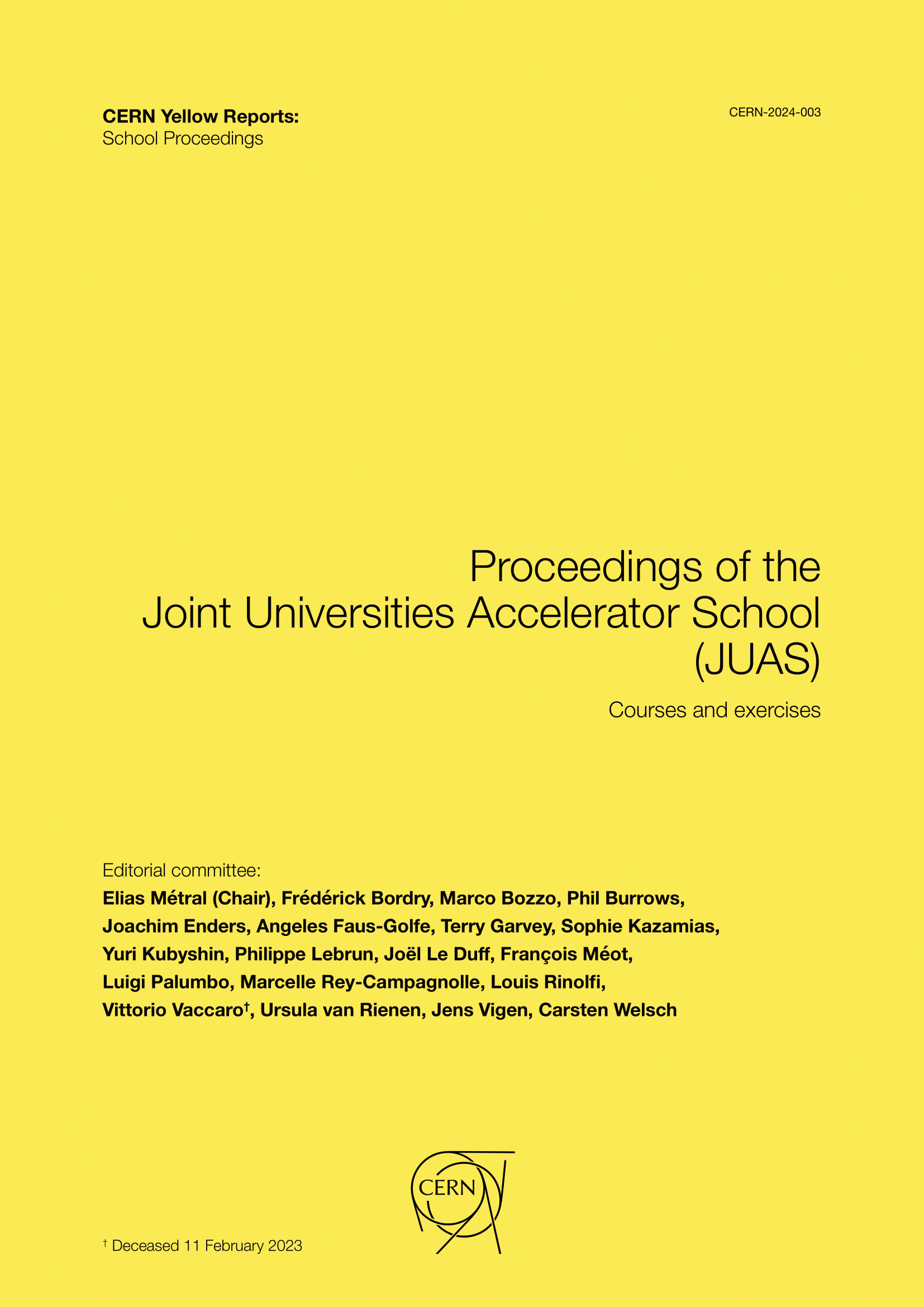I.8 — Transverse linear imperfections
DOI:
https://doi.org/10.23730/CYRSP-2024-003.341Abstract
This chapter addresses transverse linear imperfections in particle accelerators, with a particular focus on their impact on the transverse dynamics of particle beams in circular accelerators. The primary sources of these imperfections include magnetic field errors, which arise from uncertainties in magnet strengths and calibration, as well as magnet misalignments. The theoretical framework necessary for understanding these imperfections is established, introducing concepts such as multipole expansion of magnetic fields. This foundation paves the way for addressing non-linear effects, which will be discussed in the following chapter. Practical examples, including the effects of magnetic hysteresis and quadrupole magnet misalignments, are presented to illustrate the real-world consequences of these imperfections, such as closed orbit distortion and optics function distortions like beta-beating and tune shifts, as well as coupling. Furthermore, this chapter discusses local and global closed orbit correction techniques using dipole correctors, as well as advanced methods like Singular Value Decomposition (SVD) and MICADO algorithms. The chapter also provides practical methods for estimating the impact of imperfections on closed orbit, tune shifts, beta-beating, and coupling, offering a valuable toolkit for the design and optimization of circular accelerators.
Downloads
Published
Issue
Section
License

This work is licensed under a Creative Commons Attribution 4.0 International License.
Authors who publish with this publication agree to the following terms:
- CERN retains copyright and publishes the work licensed under the Creative Commons Attribution License 4.0 that allows others to share the work with an acknowledgement of the work's authorship and initial publication in this series.
- Authors are able to enter into separate, additional contractual arrangements for distribution of the published version of the work (e.g., post it to an institutional repository or publish it in a book), with an acknowledgement of its initial publication in this series.
- Authors are permitted and encouraged to post their work online (e.g., in institutional repositories or on their website) prior to and during the submission process, as it can lead to productive exchanges, as well as earlier and greater citation of published work (See The Effect of Open Access).

